News feed
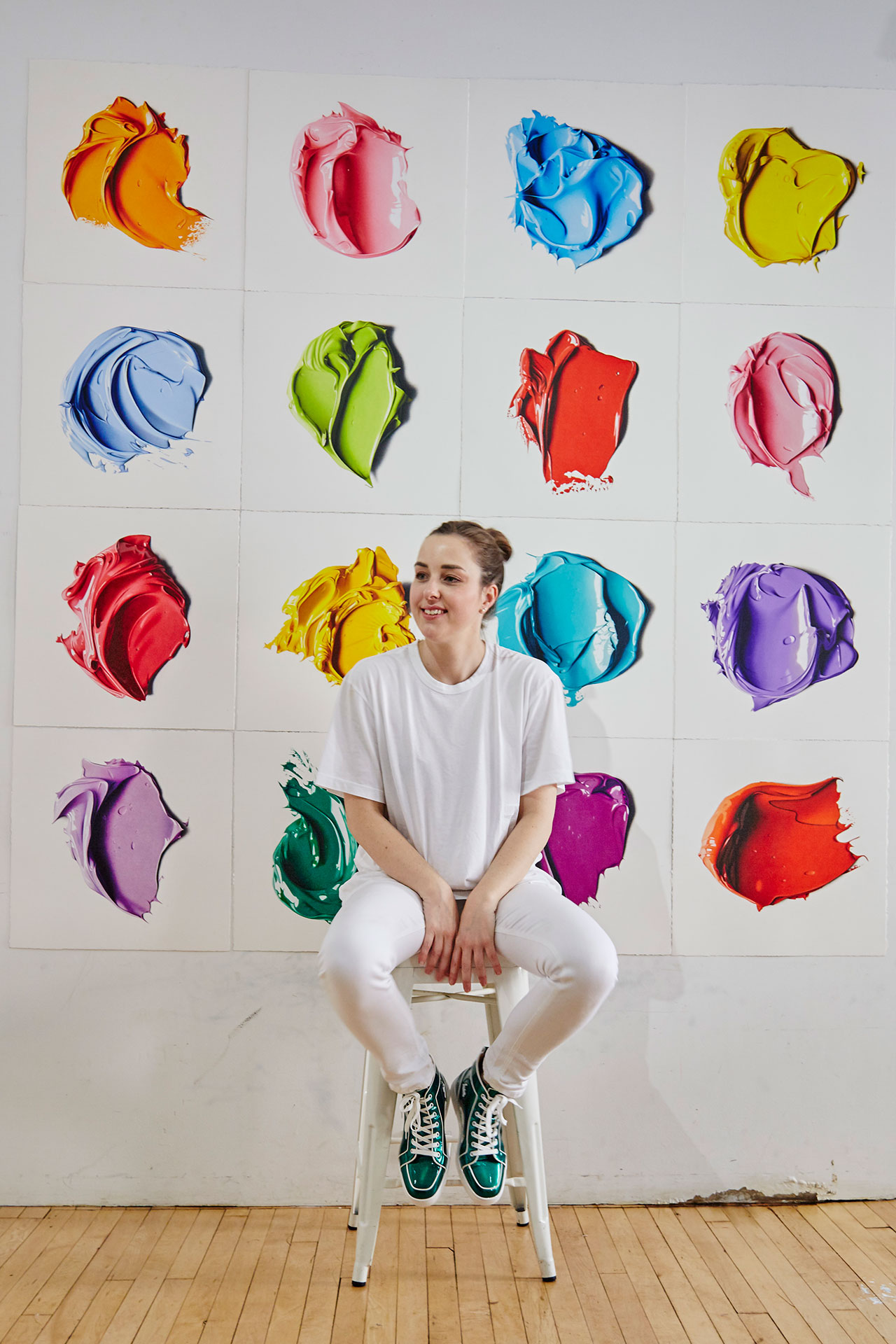
Credit: Courtesy of the artist
Earlier this week, CJ Hendry conducted a fire sale.
In the days prior, the New York-based Brisbane expatriate – who has made a considerable name for herself with her stunning large-scale monochromatic and photorealistic renderings of quotidian, consumer and luxury objects – began teasing a new series of works on Instagram. Her 273,000 followers were encouraged to send an email to the artist’s team requesting access to a password and link to a website that, at 9.00am Hong Kong time, would go live. Over 2000 people registered their interest in purchasing one of 40 new works created by the artist using 15 different shades of Prismacolor Premier and Carand’ache Luminance coloured wax pencils as part of a new body of work, Complimentary Colours, that the site housed.
In the minutes prior to 9.00am, the artist began teasing the scale of the collection on Instagram live, her hand covering the URL where the works would become available in seven minutes.
Fourteen minutes later, seven minutes into the sale, and all 40 works – valued at $3,800 each – were sold out.
“The fire sale, that was not meant to happen,” Hendry told GRAZIA from Hong Kong. “We were actually going to release these works to passers by – that would have been so much easier. We decided to go a different route. We wanted new collectors to have access to my work. Over the years, my works have been relatively inaccessible – there isn’t much of it out there. The price point was more accessible for a lot of people, it was a fun series and I wanted people to get involved.
“The fire sale, it was like a sneaker release – it wasn’t meant to happen but it did roll out that way.”
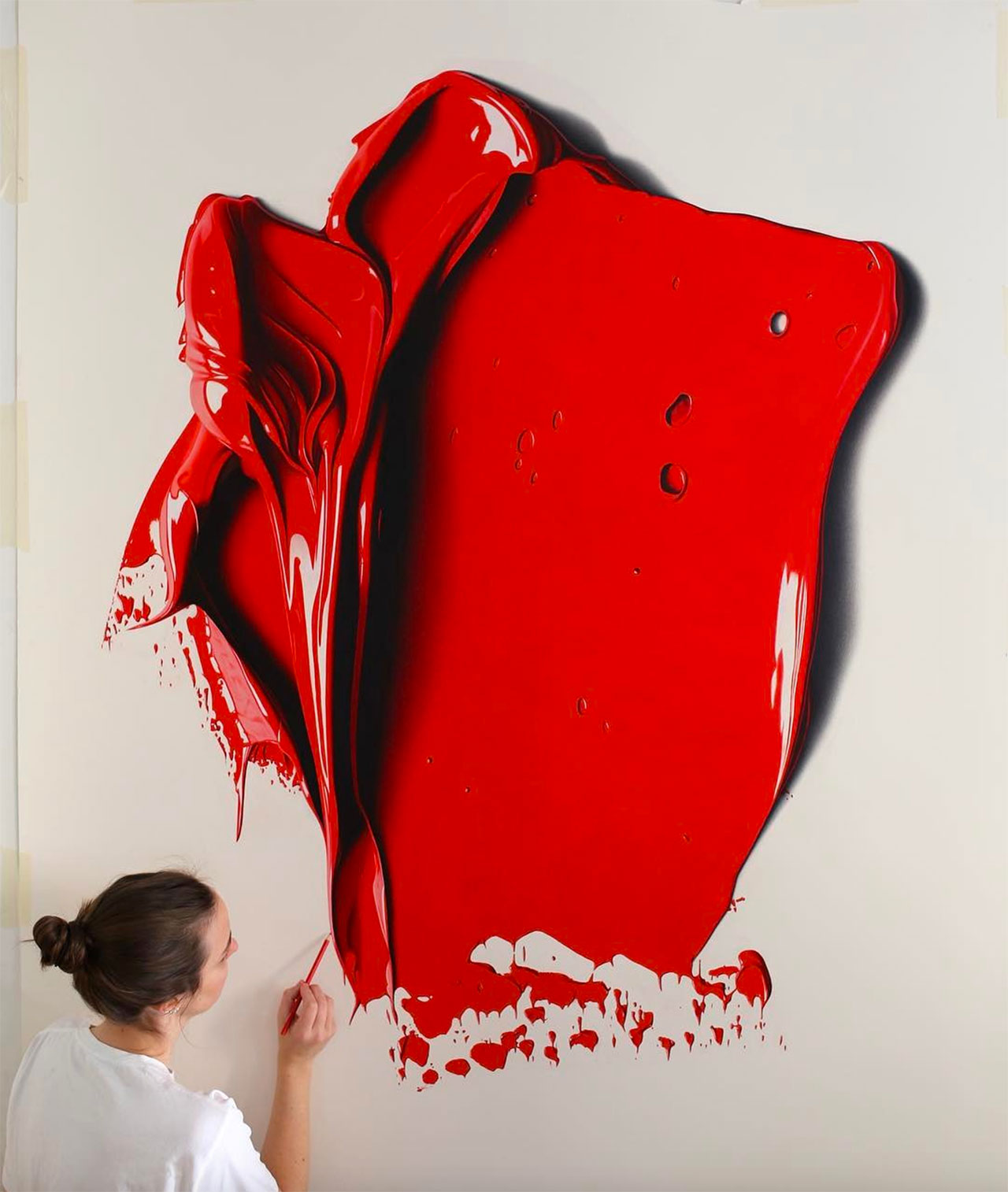
CJ Hendry adds the finishing touches to Big Red, her collaboration with Christian Louboutin as part of the brand’s fourth activation at Art Basel Hong Kong
Credit: Courtesy of the artist/Instagram
The comparison is an apt one considering the body of work was created in collaboration with Christian Louboutin, the haute cobbler who has become synonymous as much with his vertiginous heels as his flamboyant often studded sneakers, the undersides of both lacquered a (contentious) shade of fire engine red. The occasion marked not only the first time that the artist had worked in colour, but also collaborated with a brand and focused on swatches of oil paint as her subject instead of product. Louboutin commissioned the work of Hendry for their fourth Art Basel Hong Kong collaboration after the artist piqued the designers interest after employing his ‘So Kate’ stiletto as the subject of a work in her debut New York solo show The Trophy Room, in which she cast items as diverse as Birkin Bags and balloons in bronze before sketching the lustrous results. Each object, from a quilted Chanel bag to a Rabbit vibrator, was raised, deified, on a stone plinth.
“I have never actually collaborated with anyone before,” says Hendry. “Yes, I have referenced product many, many times but I don’t often say yes to collaborations because it sometimes becomes too clinical and looks too much like an advert, which is not quite my vibe. But the fact that Louboutin came on board despite the fact that I was wanting to go in a different direction in terms of not referencing product, not working in black and white – flipping everything on its head. They trusted the direction, and I will always be very, very grateful for that.”
Below, the artist speaks to GRAZIA about her creative process as an Australian artist working during a tumultuous time in America, her relationship to amorphous concept of luxury and, inevitably, her mutual fan Kanye West.
This is your first time working in colour, and not painting product. What has making that transition taught you about your process? And why substitute shoes for swatches? It’s interesting, working in colour came at the perfect time. I was feeling a little bit stale doing black and white. When I feel stale as an artist I feel it gets projected into the work and people don’t get excited about it. Not that it’s about people. But so much of where I have come from has come through social interaction. So the fact I was pumped about doing colour translated well [and] the response has been fantastic.
In terms of not drawing product, when I first started my whole artistic practice I was completely, utterly obsessed with luxury product and purchasing. As I have developed over the last four to five years, it’s not my first priority now – it’s becoming a very small priority in my life, which is kind of bizarre. I am focused on doing things that aren’t as in-your-face. It’s funny working with a brand like Louboutin, it’s my first brand experience [and] I am not referencing product. It is really a 180 [turn]; it doesn’t make sense, but it just made so much sense last night [at the Complimentary Colours opening], it really did.
Drawing something more abstract like paint is kind of funny because I can’t paint. I am hopeless at that. It’s kind of poking fun at myself because I’m not so good at that. I just thought, ‘let me use my skill and reference something I can’t do’.
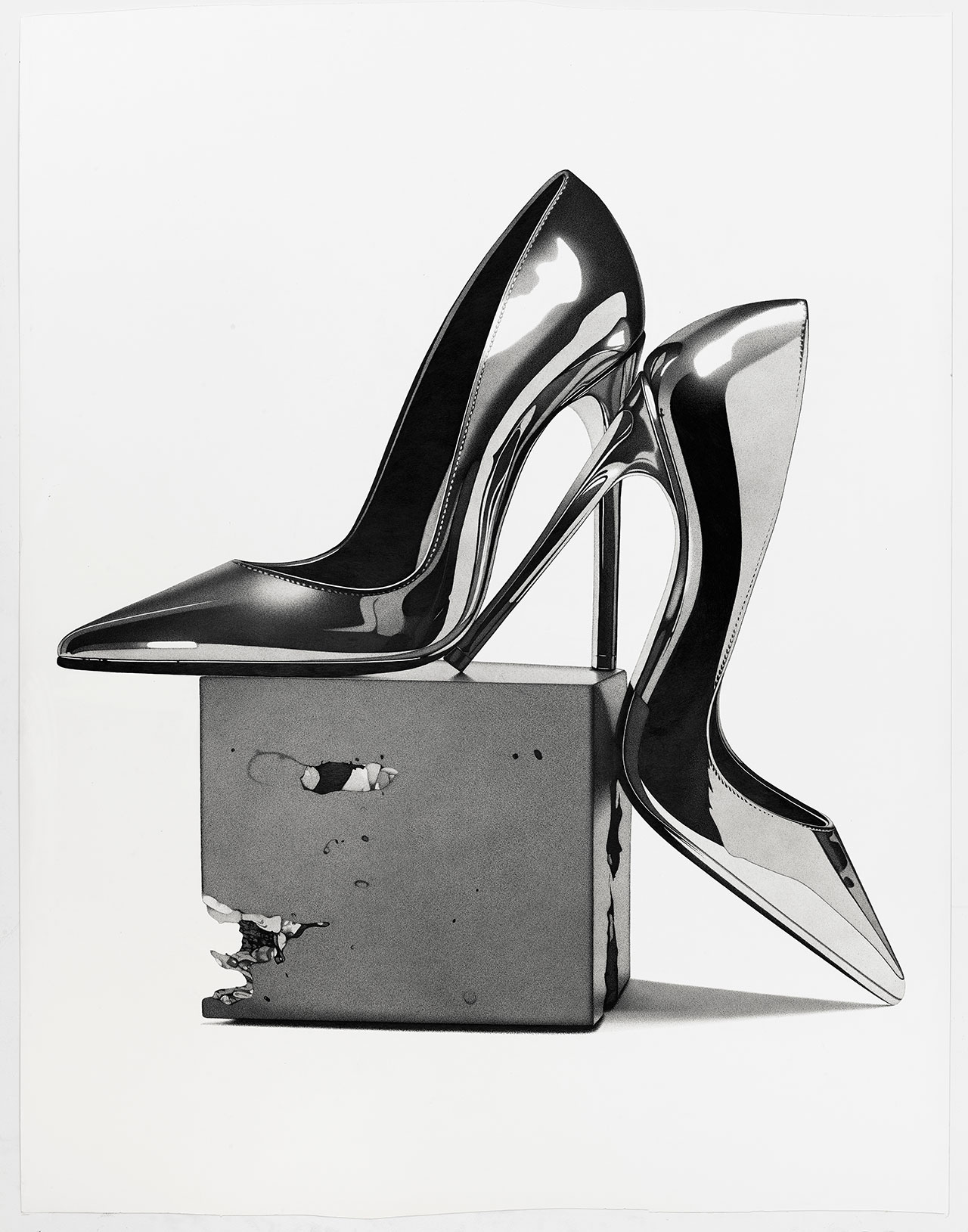
The ‘So Kate’ shoes, as pictured as part of Hendry’s The Trophy Room solo show at a pop-up gallery on Greene Street, Manhattan
Credit: Courtesy of the artist/Instagram
How did you develop your signature photorealist style? What are the technical steps involved? “I’ve always been able to draw so I didn’t have to learn how to do this. I was very fortunately given this gift. I’m also not religious so I’m not like, ‘Yay praise God.’ I have always been able to draw.
It’s not a heck of a creative process to be honest. The most creative part is maybe the composition, the choosing of the subject matter. Once the object is photographed, then it’s pretty much just mechanical craftsmanship, so it’s very much about focus and it’s a very intense time to draw.
how long, roughly, would one piece take to complete? Something may take one or two days to up to about a month, if not more, depending on the size and the intricacies. I am very intense with the way I work. I am also quite prolific, so I choose to work seven days a week because I actually love drawing. It’s not a chore. I just guess I’m able to sit down for so long because I do have quite an intense personality so I’m able to channel my OCD into this one thing that I know I’m good at and I can control. And especially because I feel, as I’m getting older, so much of life you can’t control so I feel like my drawing is something I can be super anal about.
And the transition from black and white into colour? It’s totally not different. It just means it’s a little bit more time consuming having to pick the colours. Same shit, different date. Do you know what I mean? I think the most exciting part is different subject matter in terms of it’s something way more conceptual. It looks more vibrant, it brings out a lot more emotion.
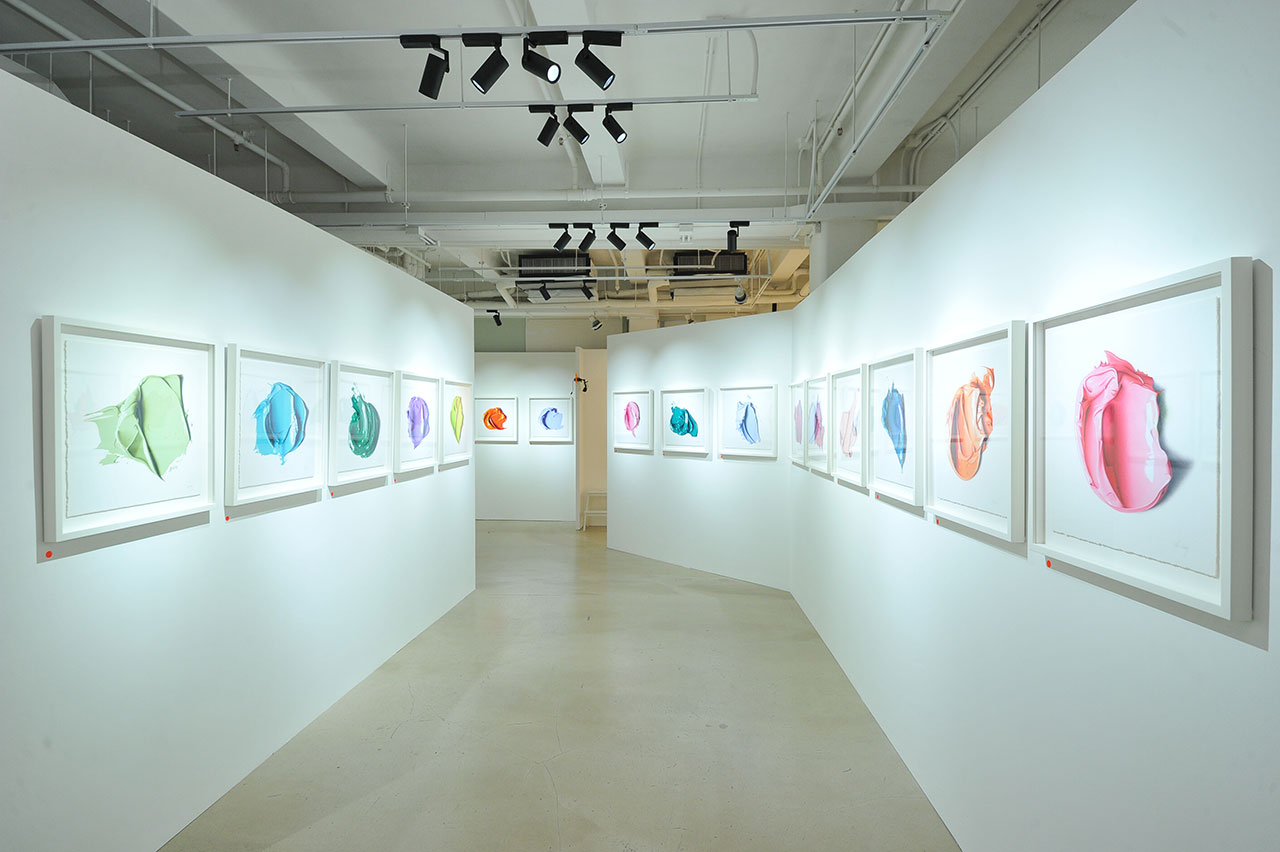
Hendry’s first colour exhibition Complimentary Colours exhibition seen in situ at the Anita Chen Lai-ling Gallery, Fringe Club in Hong Kong
Credit: Courtesy of the artist/Instagram
To what do you attribute your fascination with your earlier subject matter? Did you grow up around luxury goods? I didn’t grow up with luxury goods. I was brought up in a hard-working, middle class family. I think it’s one of those things – you want what you can’t have. My younger sister and I were too young to be able to afford luxury [products], we would save up all of our money and buy shoes we couldn’t afford and bags we couldn’t afford. It just became an obsession – a very unhealthy obsession, to be perfectly honest.
What then does ‘luxury’ mean to you today? Luxury is like fashion: it’s a form of expression, it shows people where you’re at in life. It’s funny, when I was younger I certainly couldn’t afford all of the things I was buying so I wasn’t showing people I was established enough to buy these things – but I was. So luxury gives people a certain satisfaction. Luxury, the craftsmanship, is something I admire a lot – so that’s what luxury means to me – it’s the atelier, it’s the craftsmanship, it’s the quality. Something I think I will always respect and admire.
Is it accurate to say your work is an attempt to venerate quotidian consumer goods in keeping with the tradition of Pop Art ready-mades and found objects? Would you say you’re consciously citing this historical practice for a new era? Yes it is. Since the start I haven’t consciously gone out of my way to replicate or follow in the footsteps of anyone. I unequivocally am completely true to myself. I haven’t come from [an] art historian background, I haven’t studied art history or philosophy. I have come from a finance background, so I’ve very much been true to myself in the way I have gone about my practice. Inadvertently, it has become that and I think people love to reference what they have seen before and they love to reference it back to people who have come before.
How do you think not having a fine art background impacts your perspective? I think it gives a completely uninterrupted take, so I think I’m not referencing anyone. I really don’t know what has come before me. I’m learning on the job. I haven’t consciously tried to replicate what [artists like Jeff Koons or Andy Warhol] have done or follow in their footsteps. How can I have? I’ve come through Instagram and social media and am going in blind. What I’ve done people haven’t done before.
No one knows where social media is going. It’s so young and so new – people in the tech world don’t even know. I’m kind of doing my thing and moving around the art world. I’m very interested in what’s going on the art world and I’m not really in it and I’m happy with that. I think eventually I’ll get there but I’m not pushing it.
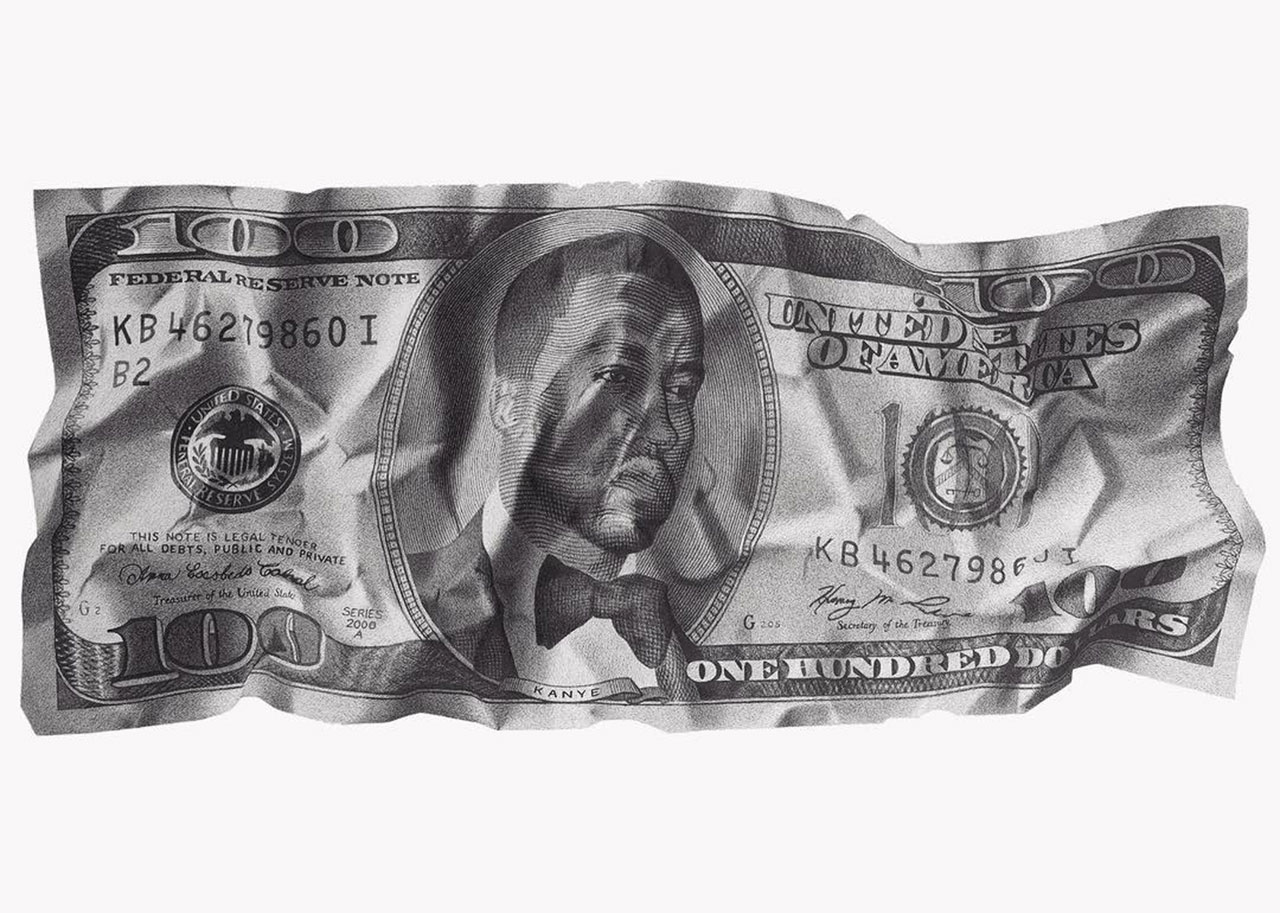
Hendry’s portrait of Kanye West on a crumpled $100 bill was presented to the rapper backstage at his Brisbane concert in 2014. According to Instagram data, it was one of the year’s most noteworthy moments in Australian art when it was reposted with the #Kanye2020 last year
Credit: Courtesy of the artist/Instagram
Social media has doubtlessly played a big part in the proliferation of your work. your #Kanye2020 post was tallied amongst the biggest moments for Australian artists on Instagram last year. Are you consciously building a brand through that platform (your embossed initials logo comes to mind), or is it secondary – an afterthought, even? I think when I first started I was a little arrogant and I didn’t care, I didn’t think it mattered. I was quite rash and abrupt. The way I have come through Instagram has been important but I don’t think it’s the be all and end all. I think I was on at the right time, I got lucky. So yes, it has played a big part of my work. That’s hilarious about #Kanye2020. I had no idea. That wasn’t strategic at all. I am a big fan girl of ‘Ye. I find that hilarious! If that’s [one of] the biggest Australian art moments, that’s really sad (put that in!).
The ‘fire sale’ approach with the Complimentary Colours body of work was fascinating to watch play out (and sell out) in real time. Did you anticipate that response, and how does it feel to see people respond with such enthusiasm? No it wasn’t anticipated, but the price points were accessible so I didn’t [think] it [it would be] a hard series to sell. It’s always nice to know people enjoy what you do. At the same time, it can work to your disadvantage. Sometimes you start to make your art around what people want, then you’re not so true to yourself.
I actually went very quiet on Instagram for about three or four months, which isn’t a long time, but for me it is a long time. No one knew that it [Complimentary Colours] was coming. I [made it] for myself without anyone knowing that is was coming [and] I really enjoyed that process.

Hendry’s first colour sketch was scaled up to 3,000 square feet and flown over Chicago, Orlando and New York in June 2016
Credit: Courtesy of the artist/Instagram
In the past your work has tackled issues like gun violence. As a recent Australian expat living in New York during a particularly fraught time in America, what other sociocultural issues can you see your work tackling in the near future? Yes, I was really proud of the anti-gun violence piece and the overall effect it had. I am just a very small voice. I’m not trying to change the world. There are so many different issues [that] I don’t have the capacity to tackle them all. I also feel more strongly about some things than other things. For example, a lot of artists got on the Trump bandwagon and were referencing Trump in their art – it’s a simple thing to do. It doesn’t interest me. I don’t feel I need to continue to put him on a pedestal. Some artists may feel strongly about that but I don’t think he deserves the time that it takes to make my art so I chose not to reference him.
I would love to continue to make more pieces around [the issue of gun violence] that are strong. I’m not just going to do it because it’s expected, I really have to feel like it means something to me. The gun thing, it does mean something to me. In Australia, it’s not even a concern, it’s not even a point of discussion. It is just bizarre that it is still a discussion in the States. I just don’t understand.
Do you think your (relative) outsider status puts you in a better or worse place to comment on those issues? I don’t think it’s better or worse. I am an outsider. If I choose to comment, I comment. It shouldn’t matter where you’re from. You should be able to speak on something if you feel passionately about it or if you don’t. There are no rules to it. Maybe some people don’t believe I should comment on it – that’s okay – that’s their opinion. It happened!
Tile and cover image: Courtesy of the artist










